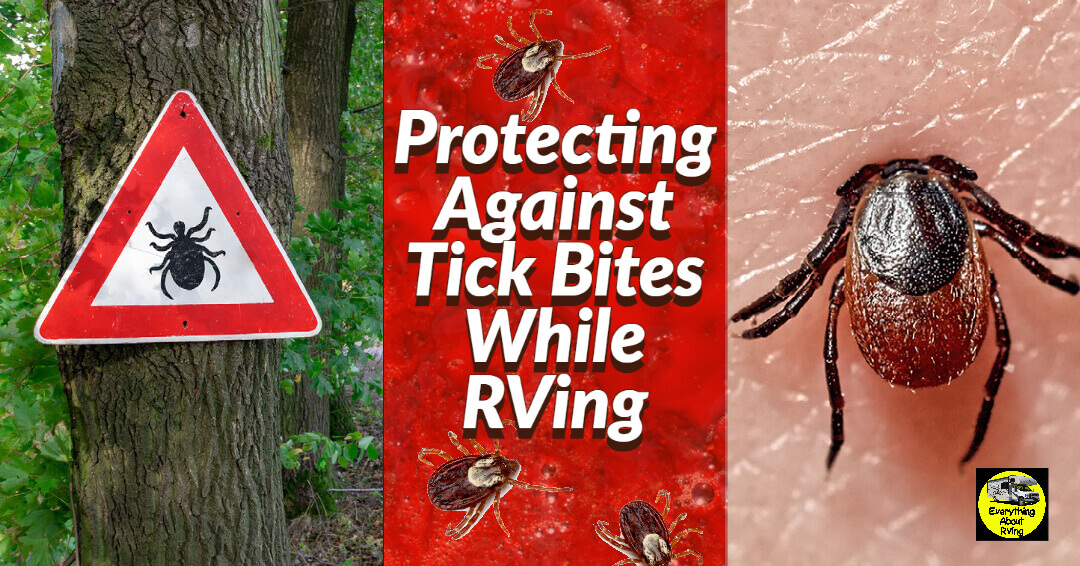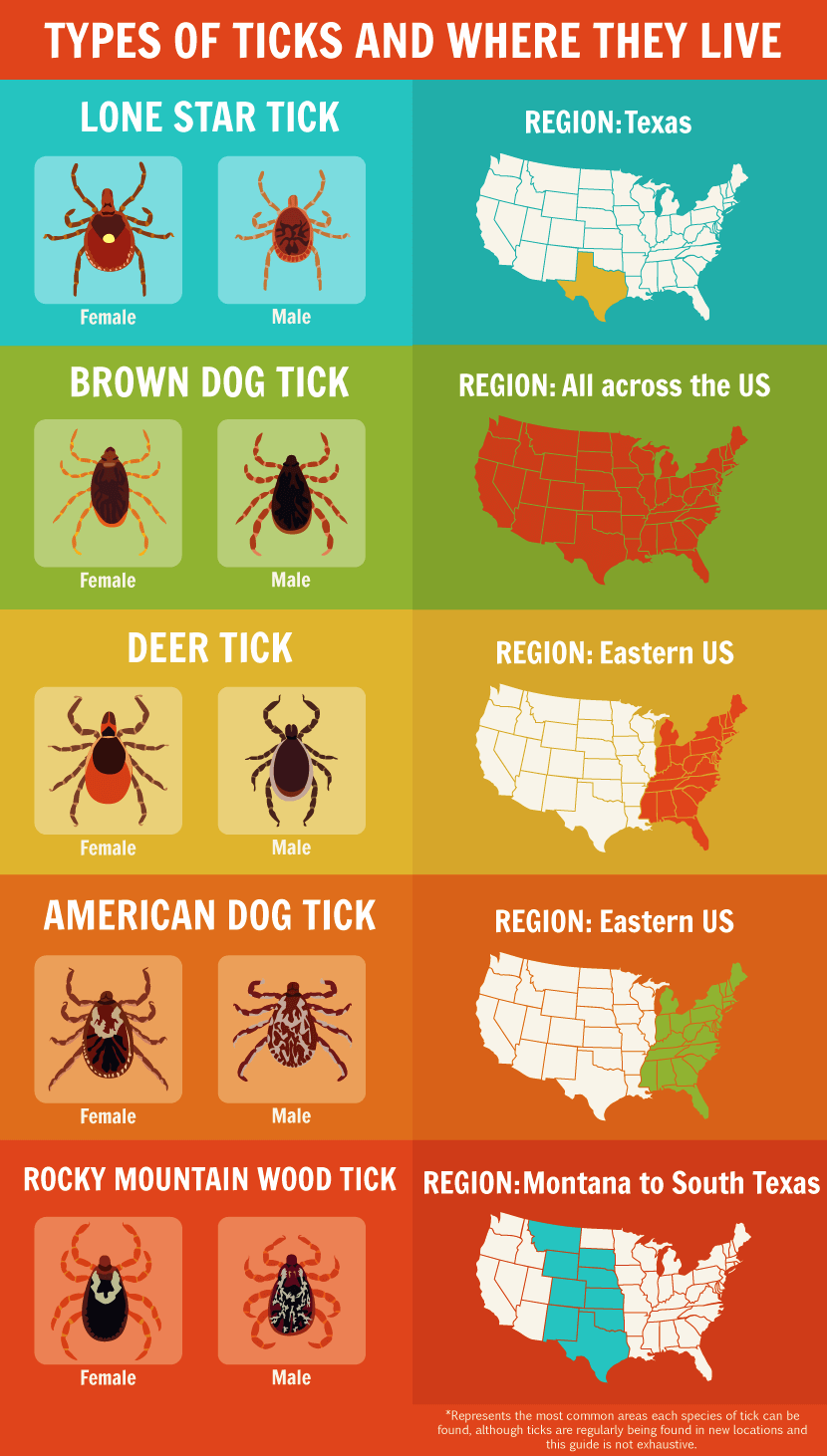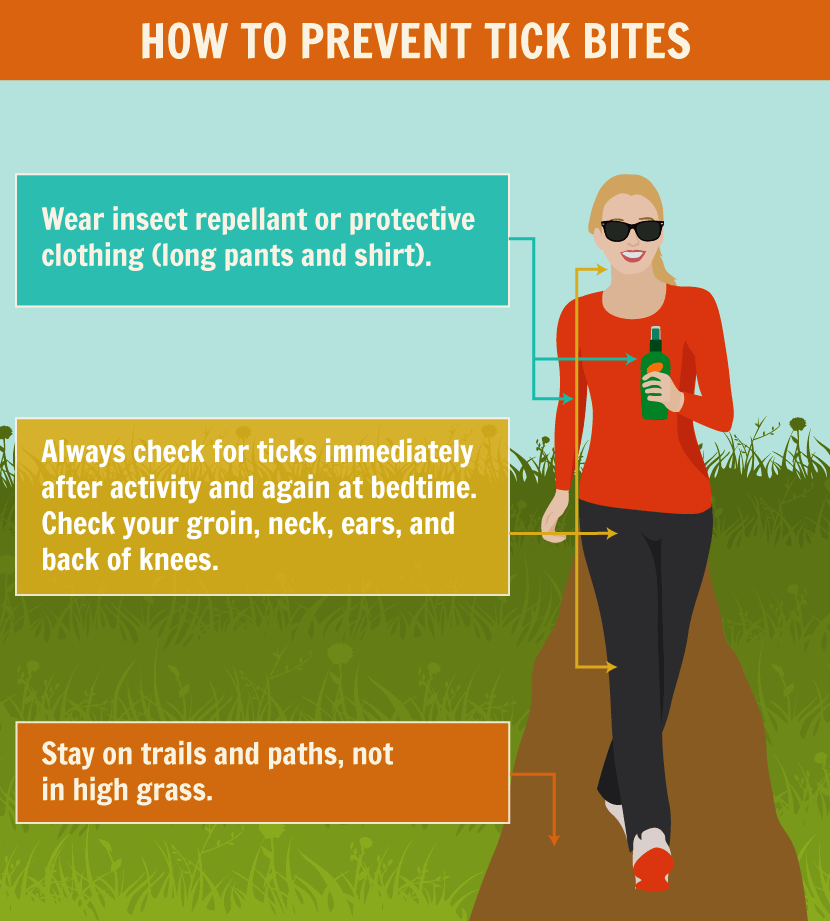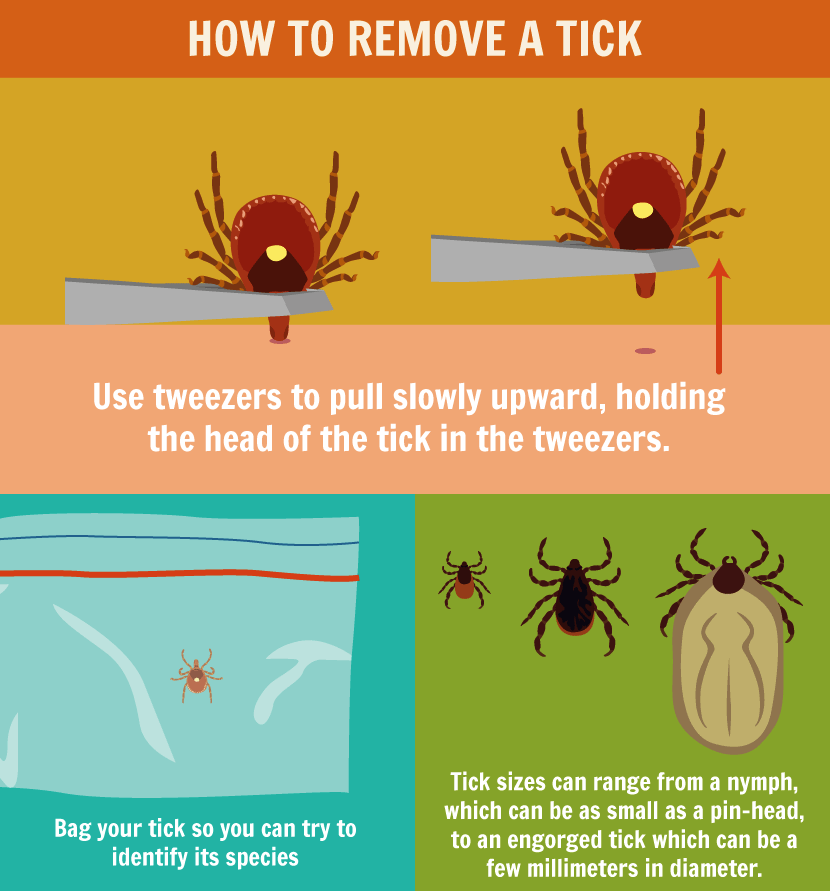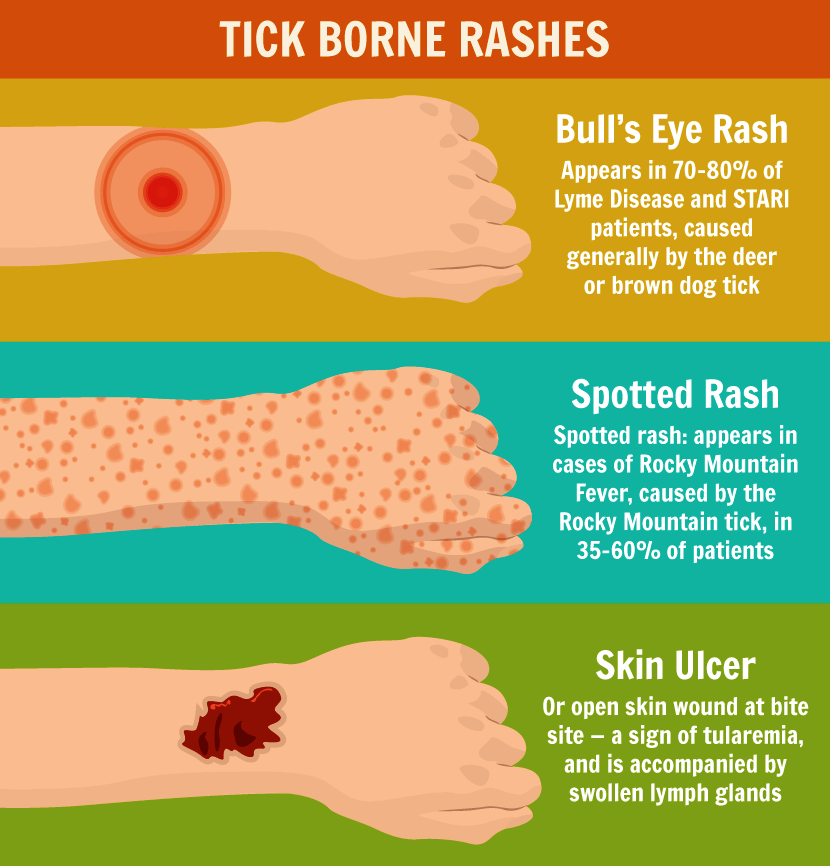Tick Dangers and Precautions While RVing
WRITTEN BY: AMY WHITLEY
Here’s what you need to know to avoid tick bites while RVing
It’s summer, and the outdoors are alive with flowers, trees, grass, and ticks! Last year alone, the Centers for Disease Control reported more than 30,000 cases of the tick-borne illness Lyme disease, up from fewer than 12,000 cases in 1995. Here’s what you need to know to avoid tick bites while RVing, what to do if bitten, and which tick species to watch out for.
Who’s Who in the Tick World
According to the Department of Defense, there are hundreds of tick species in the world today. The good news: only a handful of these species threaten humans with disease. These ticks are rarely born with the diseases they transmit but acquire them from the animals they feed on, such as deer or family pets. Afterward, the ticks can transmit Lyme disease, babesiosis, erlichiosious, and tularemia, among other illnesses. Because tick species can look like each other, especially when engorged, it’s easiest to determine type by geographical location instead of by physical characteristics.
Source: Fix.com
How to Avoid a Tick Bite
The absolute best way to avoid tick-borne illness is to avoid the bite. If you think you might be walking through tall grasses or bushes, or even hiking on trails, wear insect repellent with DEET or, better yet, long-sleeved, long-pant clothing treated with permethrin, an insecticide widely used as a repellent. Insecticide-treated outdoor clothing can be found in child and adult sizes from retailers ExOfficio, Columbia, and L.L. Bean, among others, lasts for more than 70 washings. Wearing light-colored clothing is especially useful as it allows you to spot ticks more quickly when they are on your clothing.
After any outdoor activity, check your body for ticks. Tick checks should be done immediately after activity and then again before bedtime. It’s easiest to remember if you check before taking a shower or bath. Ticks prefer damp, dark places, so be sure to examine your underarms, groin area, and other areas such as behind ears, elbows, and knees. Remember to check pets for ticks, too!
Source: Fix.com
What to do if You Find a Tick on Your Skin
- How long has the tick been there before discovery? Is the tick flat – meaning it just got on your skin and hasn’t fed yet – or engorged – meaning it’s had a full meal of your blood? According to the Harvard Medical School Department of Immunology and Infectious Diseases, the length of time a tick has fed on the body determines the likelihood of transmitting a disease.
- What type of tick is it? Use the chart to determine the type of tick, starting by eliminating those that don’t live in your region or the region you’re visiting.
- Next, remove the tick. According to the Centers for Disease Control (CDC), start by using tweezers to grasp the tick as close to the skin as possible. Pull upward with steady pressure (do not yank.) Clean the bite area with rubbing alcohol and soap. If the tweezers don’t work, a traditional method of removal is to “massage” the head of the tick by rubbing it in a circular motion with your fingertip until the tick slowly emerges.
- If you suspect a tick bite, preserve the tick for testing. Place the tick in a small amount of damp paper towel and then seal it in a plastic bag. Date the bag and place it in a refrigerator. You can send a photo of the tick to the University of Rhode Island's TickEncounter Resource Center for help identifying the species.
- If you decide to visit the doctor for treatment of a tick bite, keep in mind that their treatment plan does not hinge on identifying the tick species. It's not always easy or practical to preserve a tick for identification. In those cases, the National Outdoor Leadership School advises you to pay attention to whether you are in an area with a high incidence of tick-borne illness and to observe whether you are exhibiting signs and symptoms associated with tick-borne illness.
Source: Fix.com
Good Sam members enjoy instant discounts on fuel. Join Today!
Tick Bites: What to Watch for in Tick-Borne Illnesses
According to experts at the CDC, most ticks do not carry disease. That said, you should always have tick bites checked by a medical professional – this is particularly crucial if the tick was engorged at removal. Tick-borne illnesses can be serious, causing neurological damage in extreme cases. The most common symptom of a tick-borne illness is a red ring or “bull’s-eye” at the bite site. However, the CDC recommends other less dramatic symptoms should also be watched for, including:
- Fever/chills: Fever level varies by patient and by time of onset.
- Aches/pains: this can include headaches, fatigue, muscle aches, and joint pain.
- Variety of rashes: In addition to the most obvious bull’s-eye rash, ticks can leave spotted rashes or even skin ulcers at the bite site.
- Paralysis: Though extremely rare, patients can become paralyzed by Tick Paralysis. The paralysis subsides within 24 hours of tick removal.
Source: Fix.com
About The Author

Amy is a travel writer and editor based out of Southern Oregon. She specializes in planning outdoors adventures for children and founded the family travel site PitStopsForKids.com.
